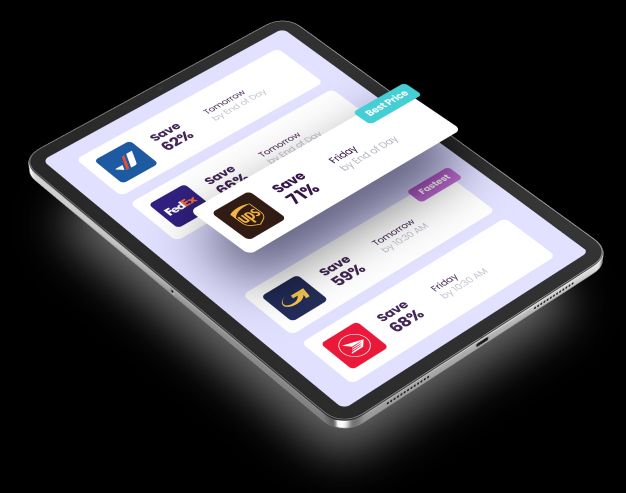Who are the leading freight forwarders for shipping from Canada to international destinations?
Freight forwarders are intermediaries between individuals and businesses who require a package or a container of packages delivered and the companies who physically handle the packed goods to their destination. Freight forwarders arrange a number of crucial details on behalf of their clients – booking transportation, completing documentation, arranging insurance, planning routes – so that goods arrive at their intended destination in a timely and cost-effective manner.
As Canada is a G7 country with trade links that span the globe, a number of leading freight forwarders operate in Canada. They include familiar companies such as UPS Supply Chains Solutions, FedEx Logistics, and DHL Global Forwarding, and equally notable firms like Kuehne + Nagel, DB Shenker, and Expeditors International.
Fortunately for you shipping personal parcels or on behalf of your company, you need not deal directly with freight forwarders. That is a role Secureship plays as the broker of your shipment.
But that said, you do have responsibilities to package your parcel, prepare the paperwork, and decide whether or not you purchase insurance. And those are the points presented in this blog.
Table of Contents
- Packaging the Parcel
- Paperwork Preparation
- Insurance
- Conclusion
Packaging the Parcel
Parcels undergo a number of bumps and collisions during their journey, so it is wise to ensure the contents are packaged to prevent damage or breakage. This is particularly important if the shipment is insured, but the recipient certainly expects the goods as ordered.
A lot of damage to a parcel’s contents can be avoided by using a new cardboard box, which once used can lose up to 50% of its strength. Next, use bubble wrap or packing peanuts to wrap individual items. Ensure each item is a minimum of 5 centimetres apart and the same distance from each wall and top and bottom of the box.
To secure the box, only use proper packing tape (rope, string, duct tape, and masking tape are unsuitable for the ordeals of travel).
For additional information, check the ISTA 3A packaging standards, which are particularly important if you have taken out parcel insurance.
Paperwork Preparation
While freight forwarders ensure all paperwork is in order before the parcel is transported, you as the shipper are responsible for providing complete and accurate information.
One of the key pieces of paper required for an internationally-bound parcel is the Commercial Invoice (CI) because without it, a parcel cannot enter a foreign country. The CI describes the parcel’s contents (documents, foodstuffs, temporary goods, etc.), which then enables customs to assess the correct duties and taxes on them. Incorrect or missing information will cause delays or the parcel’s return to its origin, and may even result in some fines.
And Secureship helps you with this very important step so that when shipping from Canada to overseas, the recipient receives their parcel as expected.
The shipping label is also a key piece of paper otherwise the carrier won’t know how to find the recipient. So, be sure to double-check the details and ensure all information including the recipient’s telephone number is included.
Insurance
Shipping insurance will cover lost or damaged parcels, but be aware that not all goods are insurable.
For instance, insurance typically does not cover:
- Breakables (glass, ceramic)
- Perishable goods (foodstuffs)
- Personal items
- Currency
- Liquids and hazardous materials
As mentioned earlier in this blog, insurance will only be valid if items are packaged according to the International Safe Transit Association’s (ISTA) 3A standards.
To obtain insurance, there are several avenues to choose from.
Your carrier (Canada Post, UPS, FedEx, etc.) offers insurance though as mentioned, not all goods may be covered, and each carrier has its own coverage specifications. So, it is best to check beforehand to ensure your items are insurable.
If the carrier will not insure your parcel, it is worth checking with your personal insurance company, or seeking a third party provider. Shipsurance is one possibility, and they are usually more cost effective than other options.
Conclusion
While freight forwarders are very important players in the international shipping business, the individual shipper has a role in preparing his or her shipment so that it arrives safely and on time at its destination.
This includes packaging the items with sufficient wrapping so they do not break from all of the handling; providing and correctly completing the commercial invoice and shipping label; deciding on a carrier; and should it be required, finding insurance coverage.
Though those tasks may be time consuming, remember that Secureship has years of experience and an easy-to-use online tool that will save you a lot of money and loads of time.





